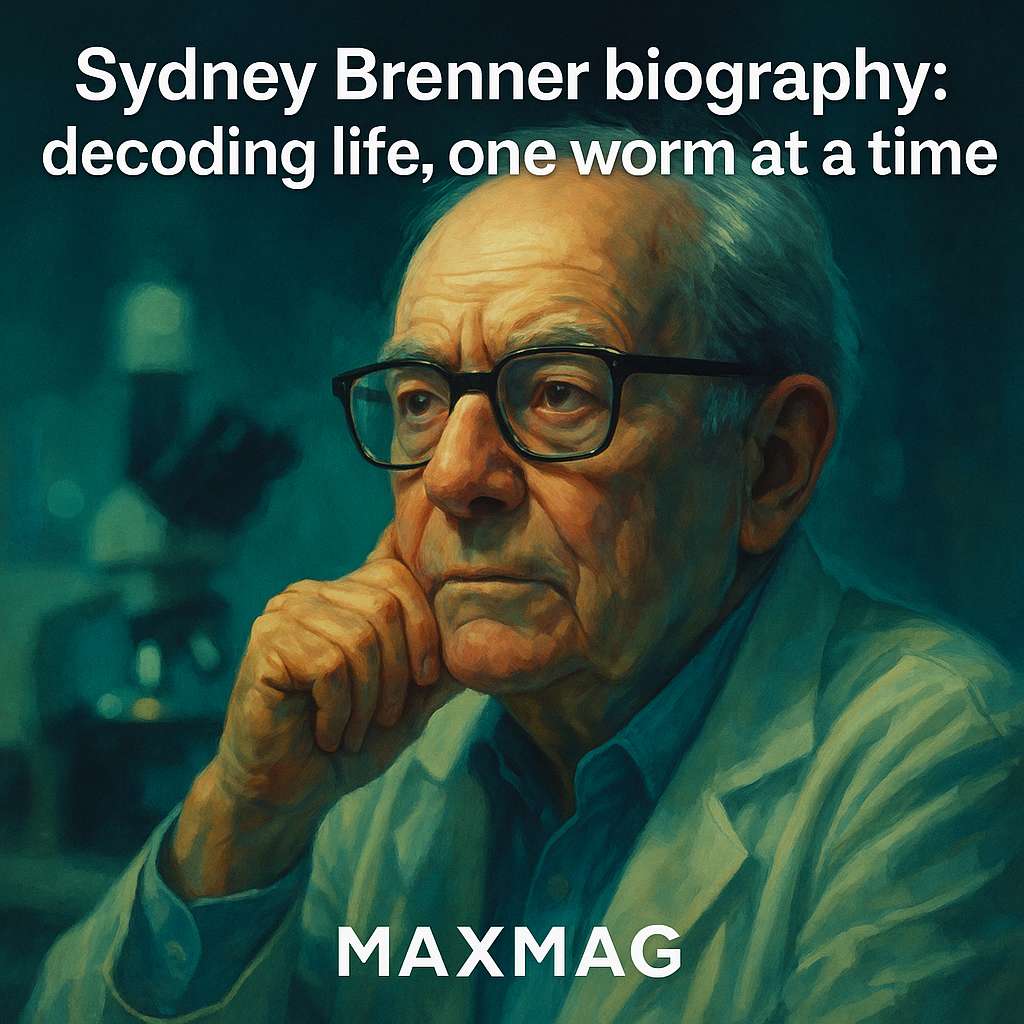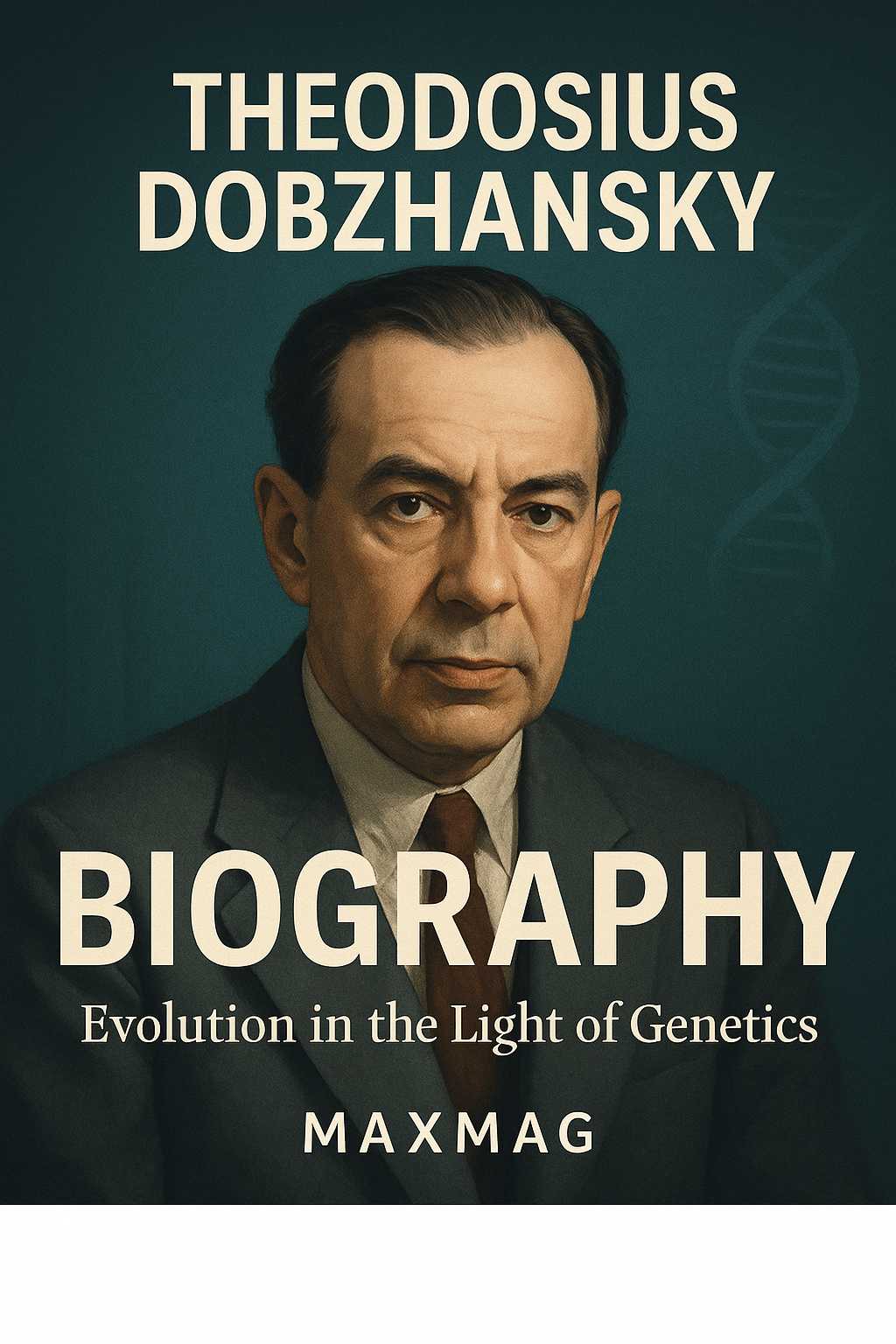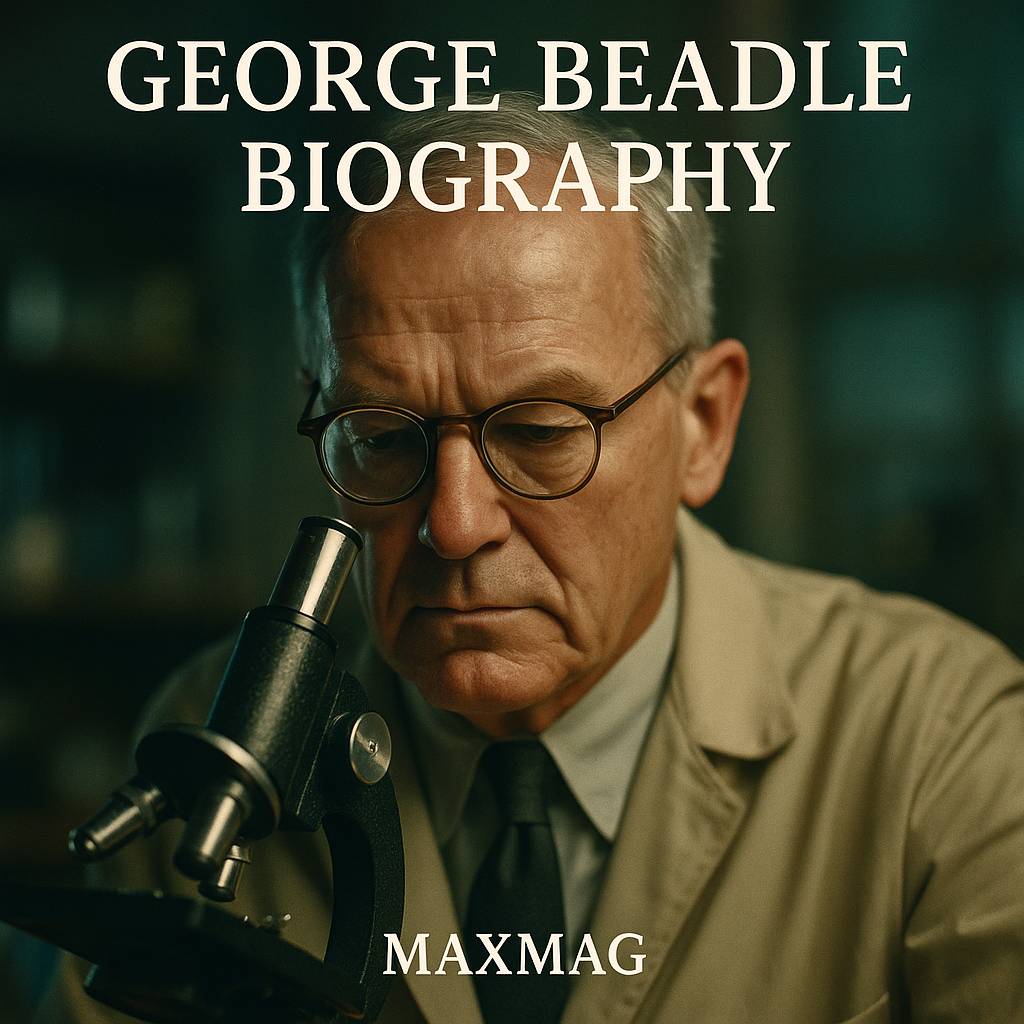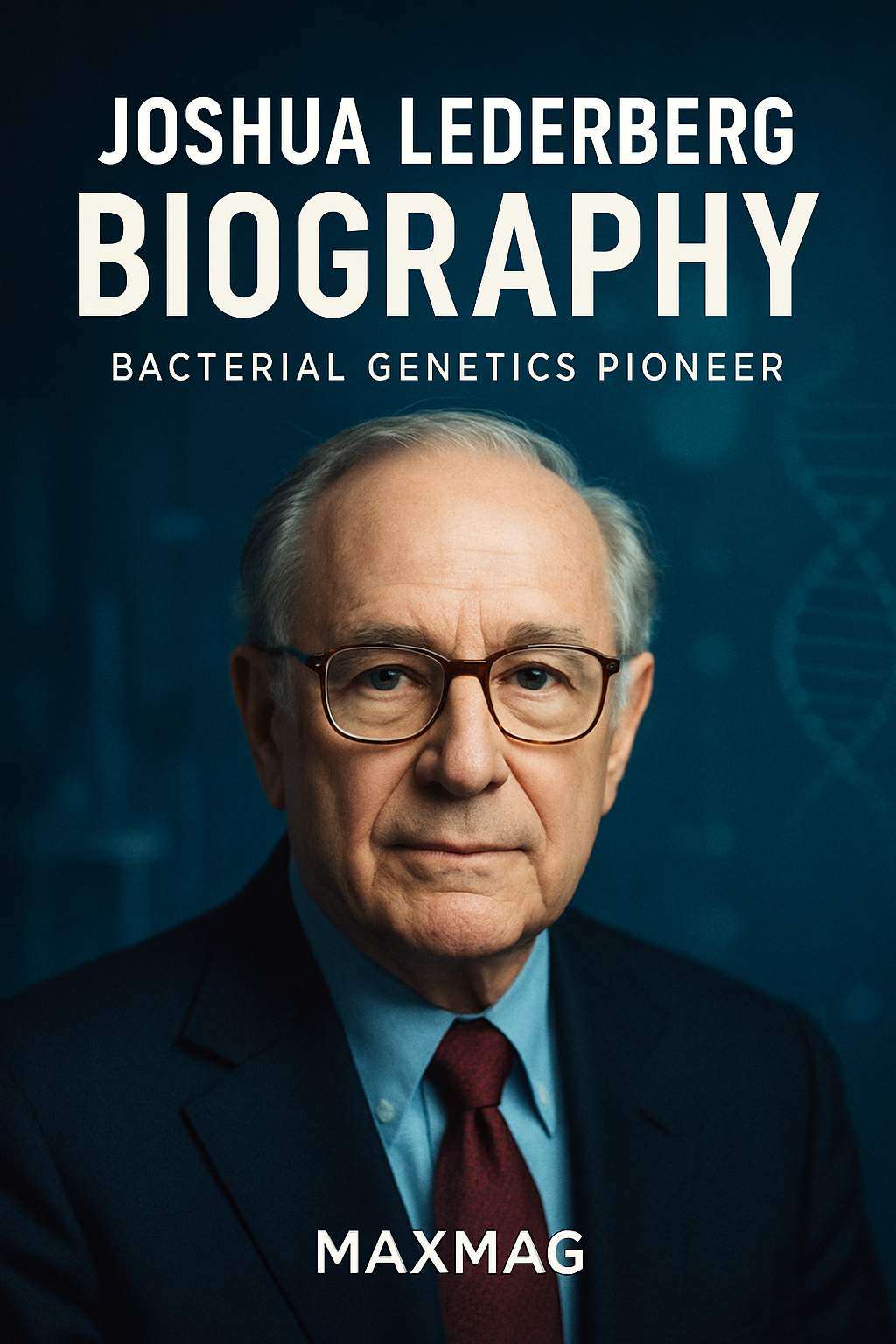
Any Joshua Lederberg biography has to begin with a disconcerting fact: by the time most students are wondering what to do with their lives, he had already helped to redraw the map of genetics. In an era when bacteria were still seen as simple, unchanging creatures, he showed that they could swap genes, adapt and evolve in ways that echoed more complex organisms. It was a discovery that did not just win a Nobel Prize; it altered how scientists thought about disease, heredity and the future of biotechnology.
This Joshua Lederberg biography follows him from a cramped New York apartment to the corridors of power in Washington, from the quiet intensity of late-night laboratory work to arguments about nuclear war, pandemic risk and the ethics of genetic engineering. Along the way we meet a young man impatient with dogma, a collaborator who thrived on debate, and an adviser whose ideas shaped space missions and public-health strategies. To understand his science is to glimpse how modern biology emerged from petri dishes and glass tubes into a force that now shapes medicine, ethics and geopolitics.
Joshua Lederberg at a glance
- American molecular biologist and pioneer of bacterial genetics, born in 1925 and raised in New York City.
- Shared the 1958 Nobel Prize in Physiology or Medicine for discovering genetic recombination in bacteria.
- Helped create planetary protection rules for space exploration and co-founded the field of exobiology.
- Served as president of Rockefeller University and as a scientific adviser to multiple U.S. presidents.
Early life and education of Joshua Lederberg
A rabbi’s son in Washington Heights
Joshua Lederberg was born in Montclair, New Jersey, in 1925, the eldest son of Jewish immigrants who soon moved the family to Washington Heights in Manhattan. His father was a rabbi, steeped in text and argument, and his mother brought stories of a hard life in what was then British-ruled Palestine. Around the dinner table, questions were encouraged rather than shut down. For a future scientist, it was a perfect training ground: every assumption could be prodded, every answer was provisional.
As a child, Lederberg devoured books with the same appetite that other kids reserved for baseball box scores. He haunted the local library, fascinated by stories of microbes, evolution and the invisible world that lurked in a drop of water. A typical Joshua Lederberg biography might make him sound like a stock character—the gifted schoolboy who loves science—but classmates remember someone more complicated: shy in some settings, fiercely outspoken in others, and always, always curious.
Stuyvesant High, Columbia and a wartime laboratory
By 15, he had graduated from Stuyvesant High School, New York’s elite science-focused public school, after racing through the curriculum. Instead of drifting, he stepped directly into the city’s scientific life. He gained access to lab space through a programme that placed promising teenagers alongside working researchers, a rare privilege in the early 1940s. While war raged overseas, Lederberg learned to handle microscopes and culture plates, discovering that the smell of agar and disinfectant felt, to him, like home.
At Columbia University he majored in zoology, but labels never quite captured what he was doing. Under the mentorship of geneticist Francis J. Ryan, he worked on the bread mould Neurospora crassa, part of a new wave of experiments that linked genes to biochemical pathways. During World War II he served as a hospital corpsman in a naval pathology lab, examining blood and stool samples for malaria. It was grim, repetitive work, yet it trained his eye to see patterns in data and reminded him that the abstractions of genetics could mean the difference between life and death.
Discovering genetics through mould and microscopes
In those Columbia years, the young student absorbed more than techniques. He watched how senior scientists argued, how they designed experiments to corner nature into revealing its secrets. The idea that heredity could be broken down, mapped and even manipulated fascinated him. Later chapters of any Joshua Lederberg biography would return to those early days in Ryan’s lab, where he first realised that microbes could be more than disease-causing nuisances—they could be tools for understanding the deepest rules of biology.
What began as a job washing glassware evolved into a calling. When he read Oswald Avery’s work suggesting that DNA carried genetic information, Lederberg did not see a dry technical claim; he saw a door opening. He became determined to use bacteria, with their fast growth and simple structures, to test big questions about heredity that would take years or decades to answer in animals or plants. It was an audacious idea for someone barely out of his teens, but it would define the core of the Joshua Lederberg biography.
Joshua Lederberg biography and the birth of bacterial genetics
A bold letter to Edward Tatum
By the mid-1940s, the consensus was clear: bacteria reproduced by splitting in two, creating identical clones. Genetics, serious people said, belonged to fruit flies and corn plants, not microbes. Lederberg disagreed. While still a medical student, he wrote a long, energetic letter to Edward Tatum, a leading geneticist at Yale, setting out his suspicion that bacteria might exchange genes in ways no one had yet detected. It was a risky move, the kind of unsolicited pitch that usually ends in a polite rejection.
Tatum, however, recognised a kindred spirit. He invited the young man to Yale. There, working with different nutritional mutants of Escherichia coli, they devised an experiment that would change the history of molecular biology. When they mixed two strains, each defective in different genes, they found progeny that could grow on media where neither parent could survive. Hidden somewhere in the mixture, genes had crossed from one bacterium to another. Against the dogma of the day, bacteria had been caught in the act of sex.
A teenage scientist challenges dogma in the Joshua Lederberg biography
The discovery of bacterial conjugation is the set-piece moment in most versions of the Joshua Lederberg biography. Yet what often gets lost is how precarious it felt at the time. Controls could fail, contaminations could creep in, and senior colleagues were sceptical. Lederberg and Tatum repeated the experiments obsessively, changing conditions, repeating crosses, hunting for artefacts that might explain away the result. Each time, the evidence pointed in the same direction: bacteria were not genetic dead ends but participants in a rich, dynamic “bacterial genetics” landscape.
When the work was finally published, it opened a floodgate. If bacteria could recombine, then genetics did not belong to a small aristocracy of lab organisms—it could be studied in the very microbes that caused human disease. The finding was one of the pivotal contributions that would later earn Lederberg a share of the Nobel Prize in Physiology or Medicine, and it cemented his reputation as a bacterial genetics pioneer whose ideas would ripple outward into medicine, agriculture and biotechnology.
Bacterial “sex” and the Nobel-winning experiment
The image of “bacterial sex” captured journalists’ attention, but the science behind it carried deeper implications. By tracking which traits travelled together during conjugation, Lederberg and colleagues could map genes on the circular chromosome of E. coli. It was an early, elegant example of using microbes as model systems to decode universal principles. Any thoughtful Joshua Lederberg biography must linger on this moment, because so much of modern genetics—from antibiotic-resistance tracking to genome engineering—rests on the tools and concepts that flowed from those early plates of bacterial colonies.
Still in his early thirties, Lederberg had helped define an entirely new field. Yet he seemed less interested in basking in recognition than in asking what else bacteria could teach him. That restless curiosity would pull him into other, unexpected territories: viruses that smuggle genes between cells, computers that mimic human reasoning, and rockets that might carry microbes between planets.
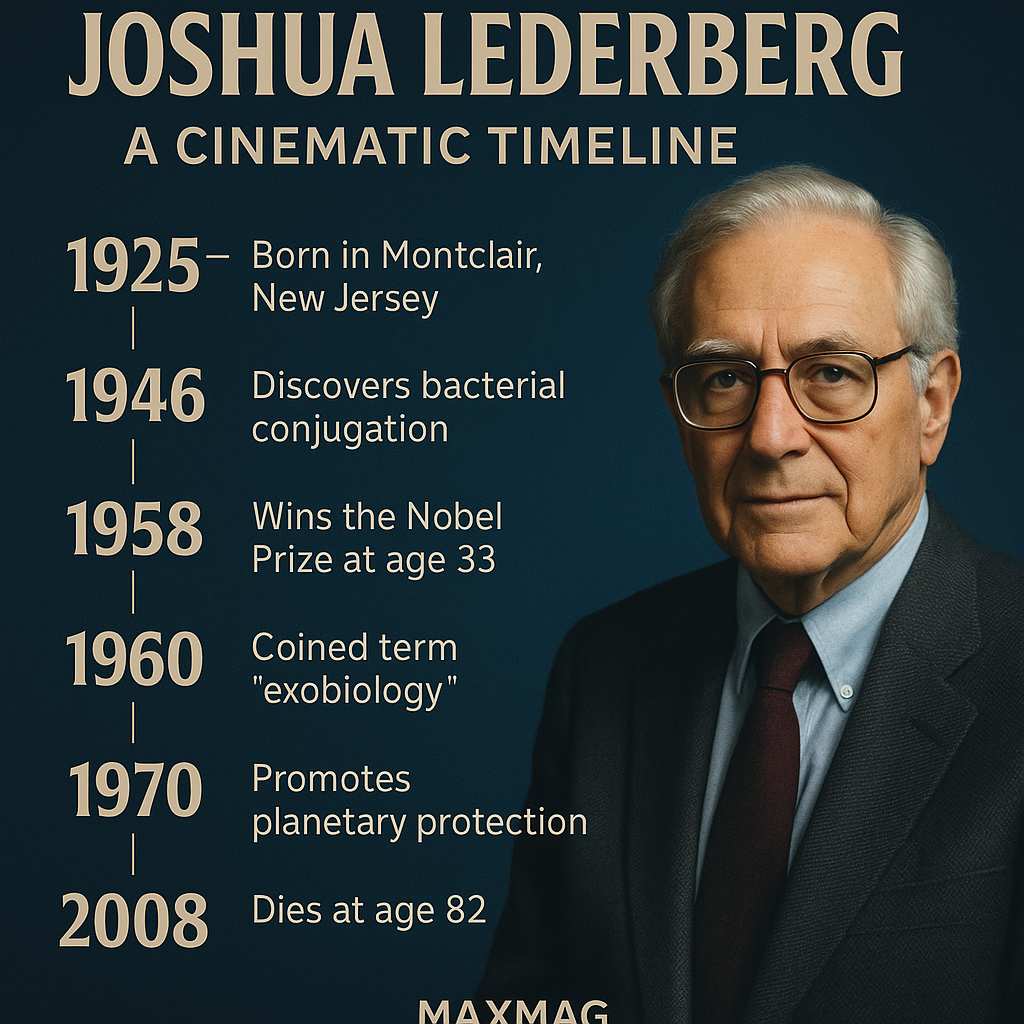
Key works and major contributions of Joshua Lederberg
Mapping the bacterial chromosome in the Joshua Lederberg biography
After conjugation came cartography. Using clever genetic crosses and time-of-entry experiments, Lederberg and his collaborators turned the bacterial chromosome into a navigable landscape. By interrupting conjugation at different intervals and seeing which traits had been transferred, they arranged genes into linear order, building some of the first detailed genetic maps for microbes. This phase of the Joshua Lederberg biography reads like a detective story: each cross yielded clues, and every partial map suggested new experiments.
These maps were not just intellectual trophies. They allowed researchers to track mutations, study metabolic pathways and, eventually, understand how bacteria acquired traits such as virulence and drug resistance. In a pre-genome-sequencing era, such work was the backbone of microbial genetics. It trained an entire generation of scientists to think in terms of linked loci and recombination frequencies, drawing straight lines from a petri dish to the larger questions of evolution and public health.
Transduction, phages and the spread of resistance
Lederberg did not stop at one mechanism of genetic exchange. With Norton Zinder, he discovered transduction—the process by which viruses called bacteriophages accidentally package bits of bacterial DNA and ferry them into new host cells. This was more than a curiosity. Transduction offered an explanation for how distant strains could suddenly share traits, and it provided yet another tool for genetic mapping. Later work with Esther Lederberg and others would reveal specialised forms of transduction, deepening our understanding of phage biology.
In the era of multidrug-resistant infections, this chapter of the Joshua Lederberg biography feels eerily prescient. The same basic mechanisms that once served as laboratory tools now help explain how resistance genes can leap between pathogens, transforming treatable infections into crises. Lederberg’s research, conducted long before the phrase “antibiotic crisis” entered headlines, gave medicine a conceptual framework to understand and, in principle, anticipate these shifts.
From microbial genetics pioneer to Nobel laureate
In 1958, at just 33 years old, Lederberg received the Nobel Prize for his discoveries about genetic recombination and the organisation of genetic material in bacteria. The award, shared with Edward Tatum and George Beadle, recognised not only individual experiments but an entire shift in how scientists thought about heredity. For a microbial geneticist, it was a rare moment in the global spotlight, and it placed Lederberg among the central figures in the history of molecular biology.
Nobel status could have frozen him into a single narrative: the man who discovered bacterial sex. Instead, he treated it almost as a licence to roam. Over the next decades, he became a bridge figure, linking bacterial genetics with computer science, space exploration and bioethics. For readers interested in the broader history of science, this is where a Joshua Lederberg biography starts to spill beyond the bounds of the lab bench and into wider society.
Methods, collaborations and working style in the Joshua Lederberg biography
Partnership with Esther Lederberg and overlooked credit
No Joshua Lederberg biography is complete without acknowledging Esther Lederberg, his first wife and a formidable scientist in her own right. Together at the University of Wisconsin–Madison, they built a laboratory that became a magnet for young researchers. Esther discovered the lambda phage, helped develop replica plating, and co-authored key papers on transduction. Yet her contributions were often downplayed in contemporary accounts, a reflection of broader gender biases in mid-twentieth-century science.
Inside the lab, however, colleagues recall a genuine partnership. The Lederbergs debated experimental designs over coffee, argued over data at the bench, and welcomed students into discussions that could last late into the night. Their working style mixed rigour with improvisation: protocols were tested, broken, rewritten. This collaborative culture became a hallmark of Lederberg’s career, resurfacing in his later roles at Stanford and Rockefeller University.
Letters, arguments and late-night lab meetings
Lederberg loved correspondence almost as much as he loved experiments. He wrote long, analytical letters to colleagues around the world, critiquing manuscripts, proposing ideas and sometimes changing his mind mid-paragraph. Many of these are preserved today in archives and provide a running commentary on the evolution of bacterial genetics and molecular biology. They show a mind that was restless, occasionally impatient, but rarely closed.
Former students describe lab meetings that could veer from technical details to philosophical questions: what counted as proof, how to balance risk and caution in science, whether a particular line of research was morally justified. In that sense, the Joshua Lederberg biography doubles as a portrait of post-war American science itself—ambitious, self-confident, and haunted by the possibilities and dangers of new technologies.
Data, hypotheses and a restless curiosity
Methodologically, Lederberg was eclectic. He embraced statistics and rigorous controls, but he also valued bold hypotheses that “stuck their necks out” far enough to be tested. He moved easily between wet lab work and theoretical speculation, between the minutiae of bacterial recombination and sweeping reflections on the future of humanity. It is no accident that he later became interested in artificial intelligence: the same pattern-finding instinct that served him in genetics made him curious about how machines might help humans think.
That curiosity sometimes made him controversial, but it also made him a connector. He could talk to computer scientists about expert systems, to NASA engineers about planetary protection, and to physicians about emerging infections. The Joshua Lederberg biography is, in this sense, a study in interdisciplinarity long before the term became fashionable.
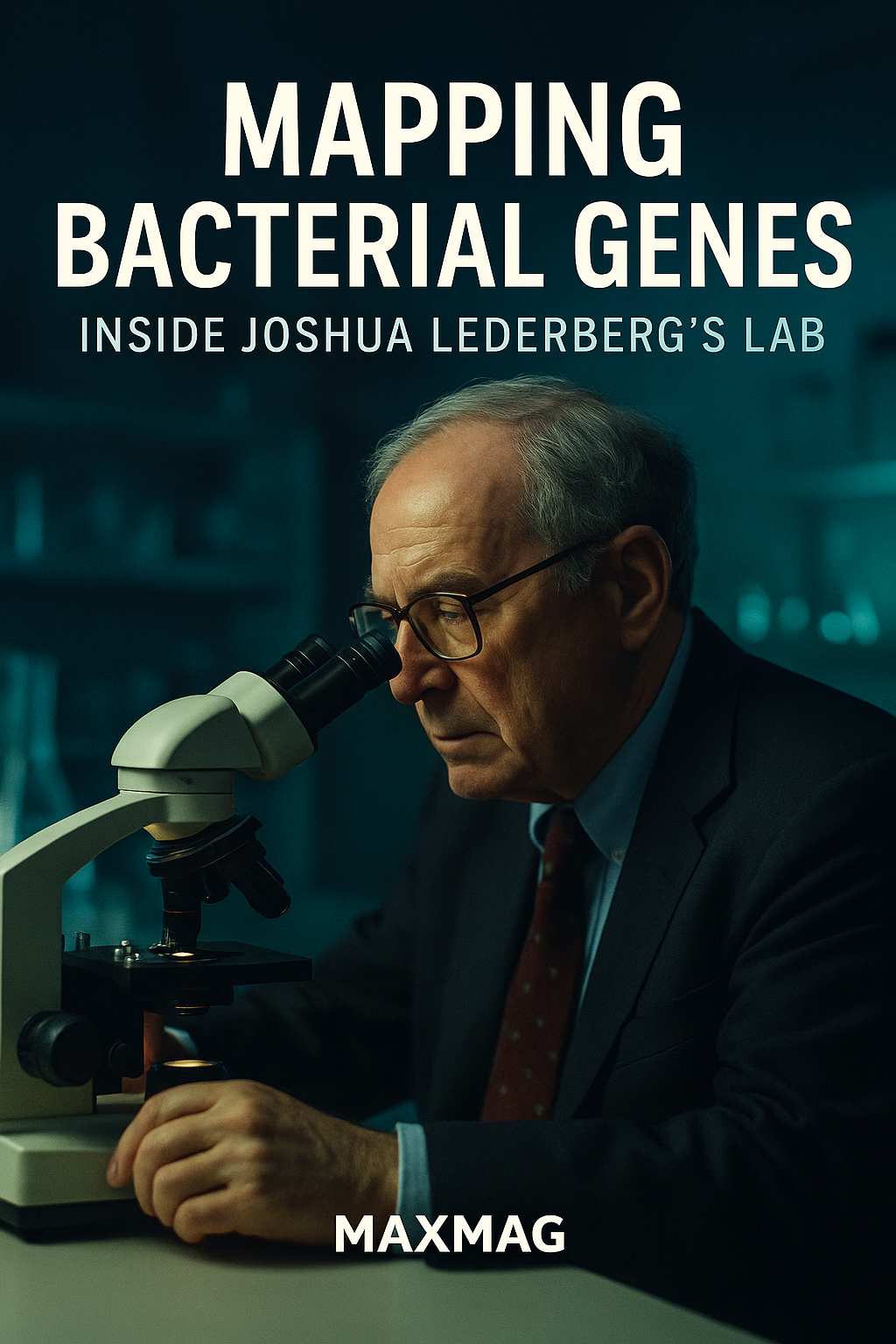
Controversies, criticism and misconceptions
The Sverdlovsk anthrax investigation
No honest Joshua Lederberg biography can avoid the uncomfortable episode of the 1979 Sverdlovsk anthrax outbreak in the Soviet Union. When reports emerged of dozens of deaths, Western observers suspected a lab accident at a military facility. Lederberg, part of a fact-finding mission in the 1980s, initially gave some credence to Soviet claims that the epidemic came from contaminated meat. His caution was informed by a scepticism about Cold War propaganda on both sides—but history would judge the event differently.
After the collapse of the Soviet Union, evidence confirmed that the outbreak had indeed resulted from an accidental release of aerosolised anthrax spores from a military plant. Critics argued that Lederberg had been too trusting of official accounts, while defenders noted that he revised his views as new data emerged. The episode serves as a reminder that even celebrated scientists can misread complex геопolitical situations, and that the interface between science and intelligence gathering is rarely straightforward.
Fears of eugenics, euphenics and genetic engineering
Lederberg was deeply engaged with the ethical implications of genetics. He coined the term “euphenics” to describe interventions that improve the expression of genes—say, through diet or medical treatment—without altering the genes themselves. At a time when memories of eugenics abuses were still raw, his writings tried to draw a line between coercive attempts to reshape human heredity and more modest efforts to help individuals live healthier lives.
Yet these discussions sometimes triggered suspicion. Critics worried that any talk of improving the human gene pool might slide back into old patterns. The Joshua Lederberg biography, read alongside his essays, shows someone acutely aware of this danger, arguing that genetic technologies needed robust public oversight and democratic debate. He believed that science could inform policy, but should never be allowed to dictate it.
Myths about lone genius in the Joshua Lederberg biography
Like many scientific stories, the Joshua Lederberg biography has sometimes been simplified into a tale of solitary genius. In reality, his achievements were woven through with collaborations—with Tatum and Beadle in genetics, with Esther Lederberg in phage biology, with Carl Sagan and others in exobiology, with computer scientists in the DENDRAL project. To credit him alone is to misunderstand how modern science works.
Lederberg himself often emphasised this point, highlighting students, postdocs and colleagues in his talks and writings. The legend of the lone discoverer may make for a tidy headline, but the real history of bacterial genetics is messier, richer and more collective. Recognising this does not diminish Lederberg’s role; it makes his ability to catalyse and sustain these networks of collaboration even more impressive.
Impact on molecular biology and on wider society
From petri dishes to gene therapy and biotechnology
The intellectual tools that emerged from Lederberg’s lab—conjugation, transduction, genetic mapping—became the scaffolding for later breakthroughs in molecular biology. They informed the development of recombinant DNA techniques, the design of gene-therapy vectors, and the biotechnology industry’s ability to engineer microbes for drugs and vaccines. A Joshua Lederberg biography is therefore also a chapter in the broader history of how basic science can, over decades, transform into industrial and medical revolutions.
For students of science history, tracing the lineage from Lederberg’s early bacterial genetics experiments to today’s CRISPR-based therapies offers a vivid example of continuity. The details have changed, but the underlying questions—how genes move, how they can be controlled, how they shape disease—remain strikingly similar. His work is a reminder that foundational discoveries in “simple” organisms often turn out to be the key to understanding ourselves.
Space-age science and planetary protection
After Sputnik, Lederberg became one of the loudest voices warning that space exploration carried biological risks. He worried that probes might bring back microbes capable of wreaking havoc on Earth, or that we might accidentally seed other planets with terrestrial life, muddying the search for extraterrestrial organisms. Working with NASA, he helped shape early planetary protection policies, insisting on sterilisation protocols and quarantine measures that sometimes frustrated engineers eager to launch.
For readers interested in astrobiology, the Joshua Lederberg biography doubles as a prehistory of debates that still rage today about Mars missions and sample return. NASA’s own obituary for him described a “leader in exobiology,” underlining how seriously his warnings were taken. In an age of renewed interest in Mars and icy moons, his insistence on caution feels less like paranoia and more like prudent stewardship of multiple worlds.
Advising presidents on plague, war and preparedness
Beyond the lab and the space agency, Lederberg became a fixture in Washington policy circles. He advised multiple U.S. administrations on topics ranging from biological warfare to pandemic preparedness, serving on panels that assessed everything from cancer research to Gulf War illness. He argued that in a world of rapid travel and emerging pathogens, public-health infrastructure and scientific literacy were matters of national security.
For a concise institutional overview of this phase of his life, the Stanford University School of Medicine has published an obituary that traces his trajectory from Wisconsin to Stanford and on to Rockefeller University, highlighting both his scientific and advisory roles (Stanford University obituary of Joshua Lederberg). It is striking how many modern discussions about bioterrorism, zoonotic spillover and global health echo concerns he raised decades earlier.

Personal beliefs, character and private life
Letters home and the weight of success
Fame arrived early, and it did not always sit comfortably. Friends recall a man who could be charming and generous, but also anxious about whether he was living up to the expectations that came with a Nobel Prize. Private letters show him worrying about the direction of science policy, the pressures on young researchers, and the fragility of institutions he cared about. These intimate glimpses add texture to the Joshua Lederberg biography, revealing someone who never quite stopped questioning his own role.
His intellectual confidence coexisted with personal doubts. Was he spending enough time in the lab? Should he be writing more for the general public, or focusing on high-level advisory work? These tensions are familiar to many scientists who find themselves pulled between research, administration and public engagement. Lederberg’s life illustrates how hard it can be to balance those demands without burning out.
Marriage, divorce and scientific partnership
Lederberg married Esther Zimmer in 1946, and for two decades their scientific and personal lives were tightly intertwined. Their eventual divorce in the 1960s was painful, not least because it unfolded in the small, gossip-prone world of academic science. He later married psychiatrist Marguerite Stein Kirsch, with whom he built a more private, family-oriented life that still allowed him to maintain a demanding schedule of writing, advising and travel.
These relationships remind us that the Joshua Lederberg biography is not just about experiments and committees. It is also about the emotional labour of trying to sustain marriages and friendships under the glare of professional success. Students saw him as a demanding but loyal mentor; colleagues sometimes found him stubborn yet open to persuasion. The same intensity that powered his science could make him both inspiring and exhausting to be around.
A public intellectual who loved debate
Lederberg wrote columns for newspapers, appeared in public forums and engaged in fierce debates about topics ranging from nuclear winter to the ethics of gene editing. He believed that scientists had a responsibility to speak beyond their own disciplines, but he also feared the politicisation of science. In this, he belonged to a generation marked by the Manhattan Project and the Cold War, acutely aware that knowledge could be used for both healing and harm.
His interventions were rarely neutral. He argued for robust arms-control treaties, for investment in basic science, for transparency about biological risks. Modern readers may not agree with all his conclusions, but the Joshua Lederberg biography shows someone committed to the idea that expertise should be brought into democratic conversation, not hoarded behind institutional walls.
Later years and final chapter of Joshua Lederberg
Rockefeller University and the science of institutions
In 1978, Lederberg became president of Rockefeller University, one of the world’s leading biomedical research institutions. It was a role that required a different kind of problem-solving: budgets instead of bacterial colonies, faculty recruitment instead of phage crosses. He saw universities as living organisms that needed careful tending, balancing stability with innovation. Under his leadership, Rockefeller strengthened its reputation in molecular biology, immunology and neuroscience.
Administrative life did not completely pull him away from science. He continued to write essays, advise government bodies and stay abreast of developments in fields as diverse as computer science and epidemiology. For biographers, this period illustrates a widening of perspective: the Joshua Lederberg biography turns from the story of one researcher to that of a custodian of scientific culture more broadly.
Chronic illness, pneumonia and a reflective elder
In his later years, Lederberg faced health problems, including heart disease, yet he remained intellectually active. He held emeritus positions, participated in conferences and kept up a steady correspondence. When he died of pneumonia in New York in 2008, aged 82, obituaries around the world framed him as a foundational figure in modern genetics and a key architect of the interface between science and public policy. The New York Times captured this dual role in a widely read obituary that portrayed him as both a bench scientist and a public thinker (New York Times obituary of Joshua Lederberg).
In these final chapters, the tone of any Joshua Lederberg biography naturally shifts. The dazzling discoveries of youth give way to quieter work—mentoring, reflective writing, institutional memory. Yet the sense of urgency never quite disappears. He worried about pandemics, about the misuse of biotechnology, about the erosion of scientific standards. Even as his own experiments receded into the past, he remained keenly aware that their consequences were still unfolding.
How friends and students remember the Joshua Lederberg biography
Former students and colleagues remember Lederberg as an exacting but generous mentor, someone who could demolish an argument in a seminar and then spend an hour helping a student rebuild it. Many recount how he urged them to read widely outside their speciality, to understand the history and philosophy of science as well as the latest techniques. In that sense, their memories form a living extension of the Joshua Lederberg biography, carrying his influence into new labs, new fields and new ethical debates.
These personal recollections complicate simple narratives of heroism. They show a man capable of misjudgement and stubbornness, but also of humility and change. Above all, they show someone who believed that ideas mattered, and that the best way to honour science was to keep questioning it.
The lasting legacy of the Joshua Lederberg biography
How students still learn bacterial genetics
Today, undergraduates encountering bacterial conjugation for the first time are often told a brief version of the story: a clever experiment, a surprise result, a Nobel Prize. But behind those few textbook paragraphs lies the much richer narrative traced in this Joshua Lederberg biography—a narrative of persistence, collaboration, doubt and imagination. Each time a student draws a map of the E. coli chromosome on a whiteboard, they are unknowingly reenacting conceptual moves that Lederberg and his colleagues made in the 1940s and 1950s.
His work also lives on in the methods that scientists now take for granted. Techniques for moving genes between organisms, for tracking horizontal gene transfer, for modelling bacterial populations under stress—all bear the imprint of his early insights. In that sense, his legacy is less a set of static achievements than a toolkit that continues to evolve in new hands.
Why planetary protection remains a live debate
In the age of private spaceflight and renewed interest in Mars, Lederberg’s warnings about planetary contamination feel newly urgent. Questions he raised decades ago—How clean must a spacecraft be? Who decides acceptable levels of risk? What do we owe to hypothetical alien ecosystems?—are now the subject of international treaties and technical guidelines. The Joshua Lederberg biography thus links the microscopic world of bacteria to the cosmic scale of planetary exploration.
As scientists plan sample-return missions that will bring Martian rocks to Earth, the frameworks he helped establish continue to shape the conversation. His insistence that biology be at the table, not an afterthought to engineering, remains a central lesson. Planetary protection is no longer a fringe concern; it is an integral part of how responsible space science is done.
What Joshua Lederberg can teach today’s young scientists
Perhaps the most enduring message of any Joshua Lederberg biography is that scientific careers need not be linear. He shifted from mould to bacteria, from genes to planets, from lab bench to presidential panels, without ever fully leaving any of them behind. For young researchers facing a world of narrow specialisation, his example suggests another path: one where curiosity, ethical reflection and public engagement are not distractions but essential parts of the job.
In a time when debates about genetic engineering, pandemic risk and space exploration are again at the forefront, understanding the Joshua Lederberg biography is more than an exercise in nostalgia. It offers a guide to thinking about how knowledge is made, how it travels and how it should be used. His life story reminds us that science is not just a collection of facts, but a human enterprise, full of argument, uncertainty and hope.
Frequently Asked Questions about Joshua Lederberg biography
Q1: Who was Joshua Lederberg and why is the Joshua Lederberg biography important for modern genetics?
Q2: What was Joshua Lederberg’s most famous scientific discovery?
Q3: How did Joshua Lederberg contribute to space science and planetary protection?
Q4: What controversies or criticisms feature in the Joshua Lederberg biography?
Q5: How did Joshua Lederberg’s work influence today’s biotechnology and medicine?
Q6: What can young scientists learn from the Joshua Lederberg biography about building a career in science?





